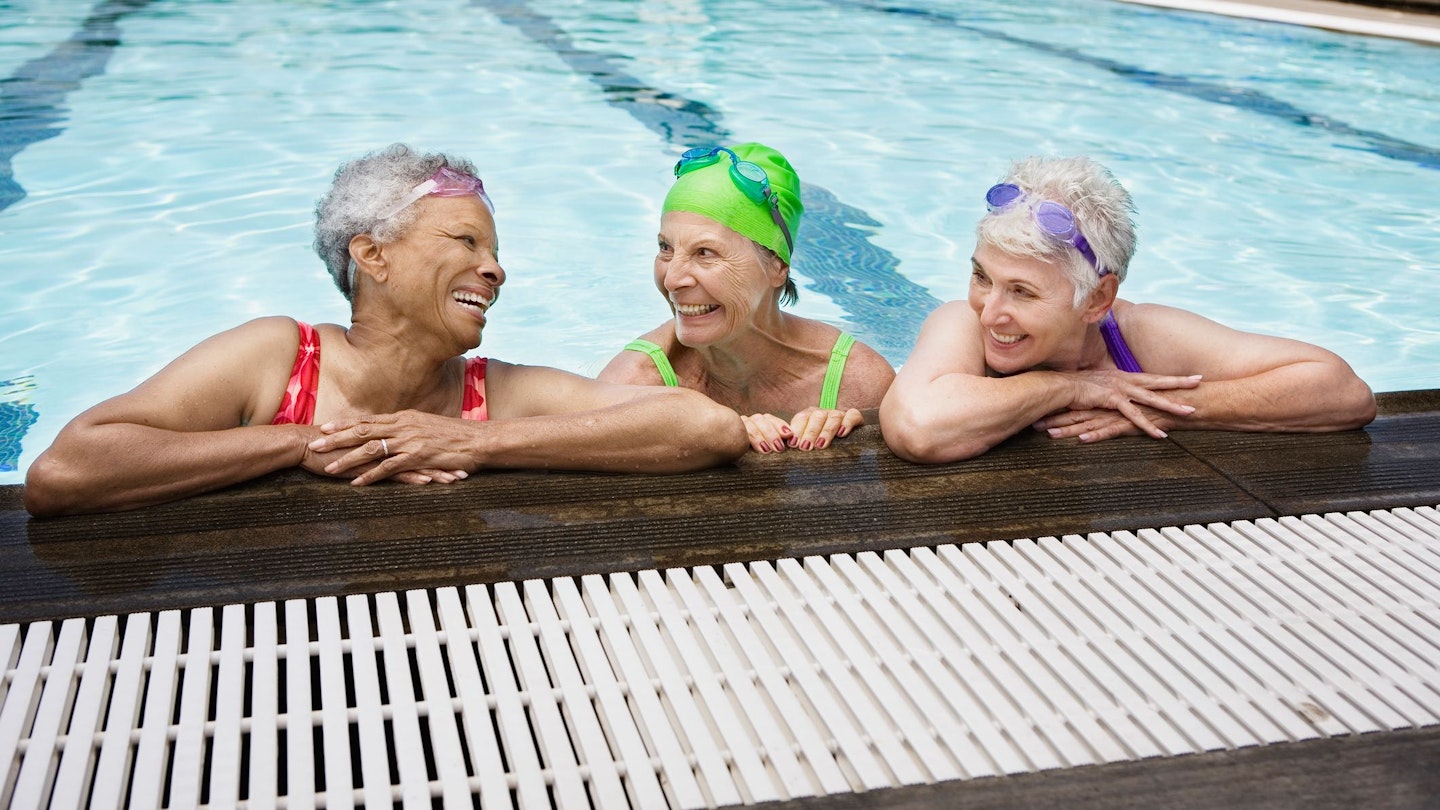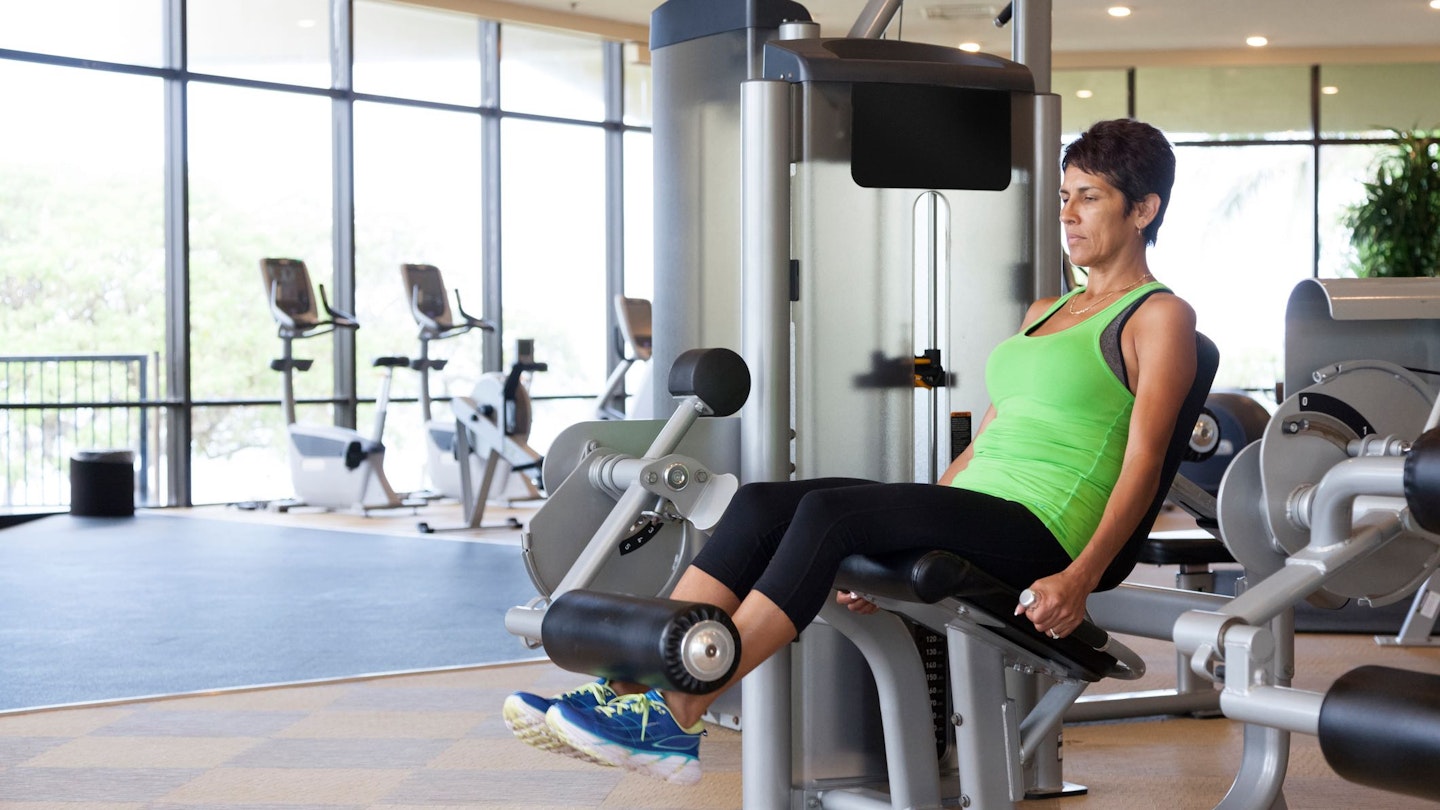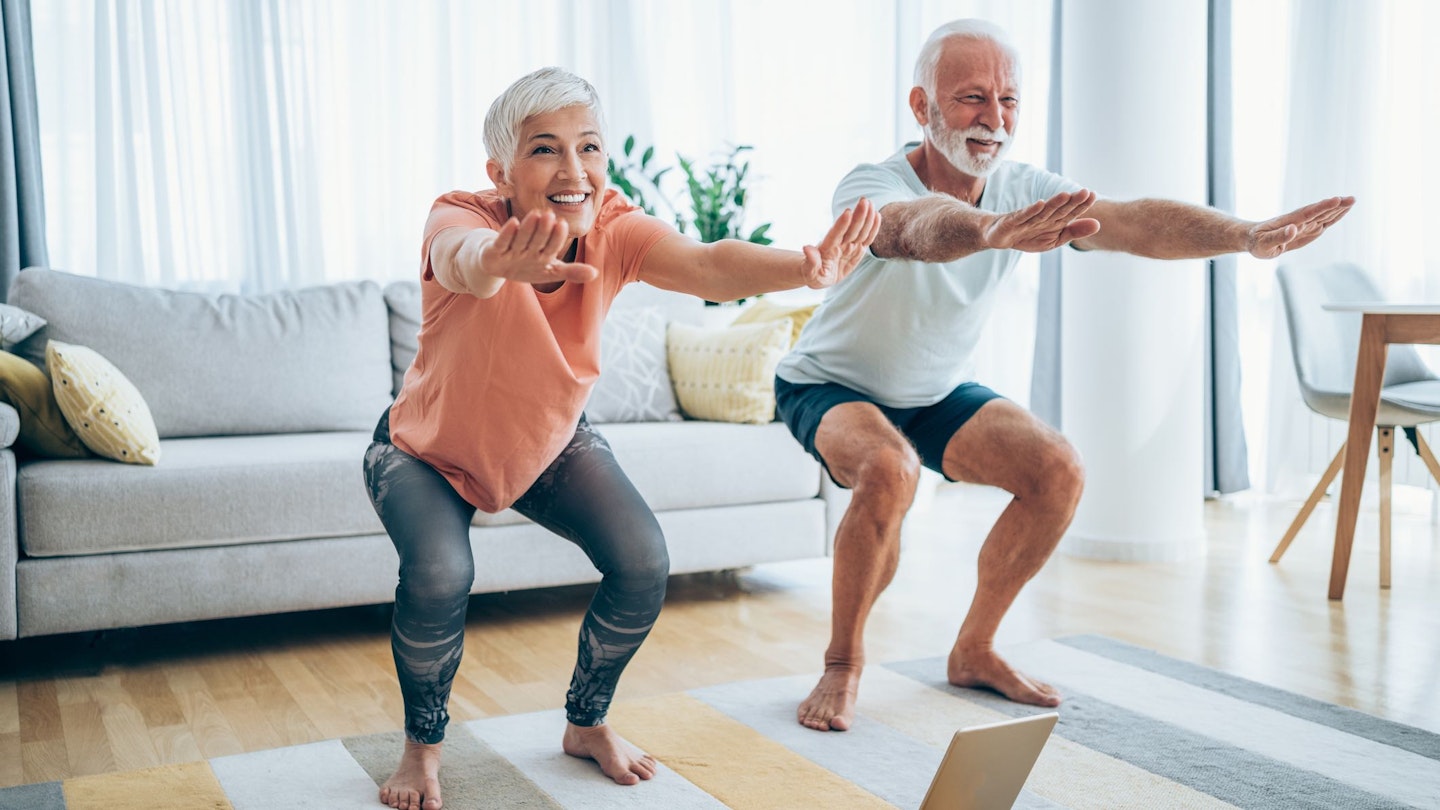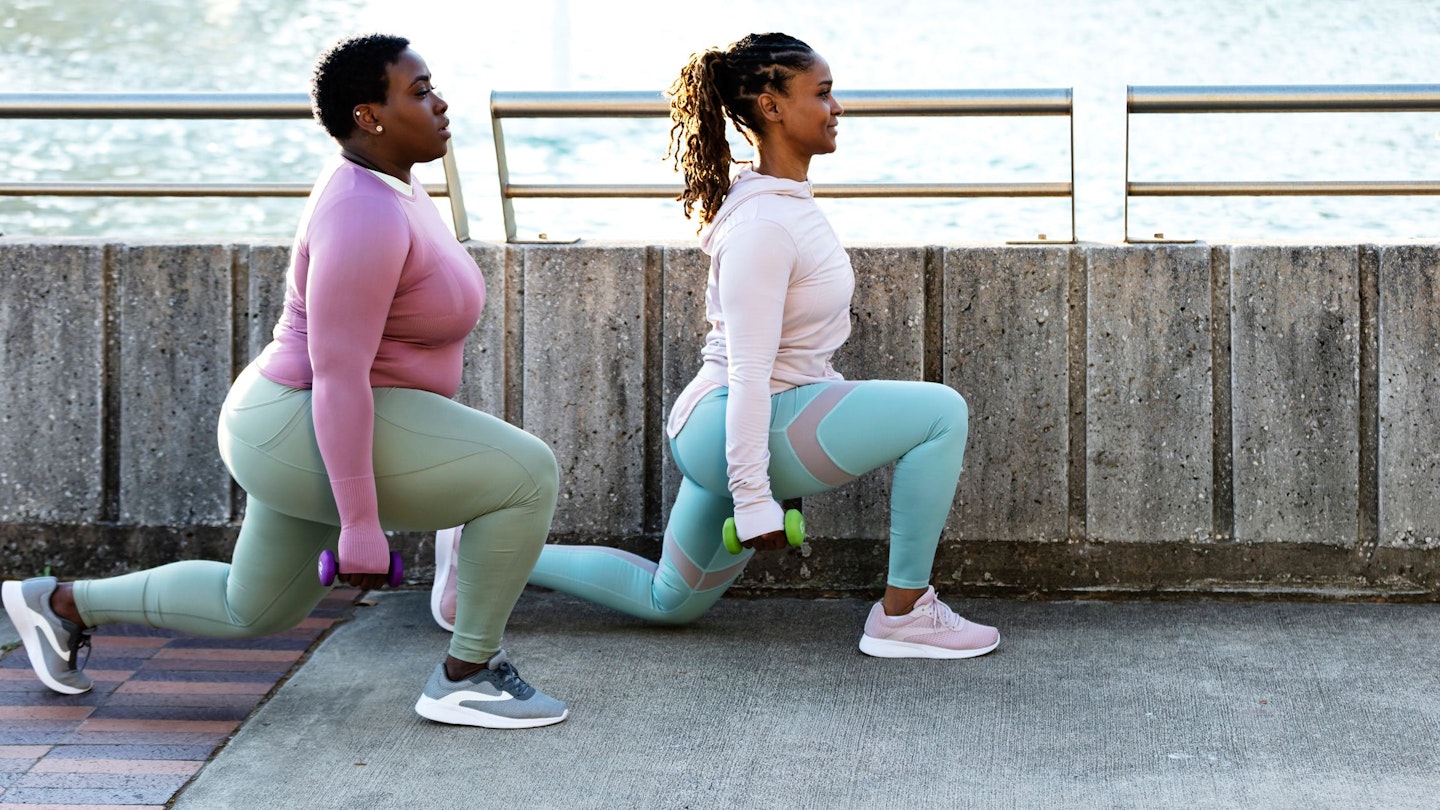Make knee pain a thing of the past with these knee strengthening exercises from our fitness expert
If you’re experiencing knee pain, you’re not alone. Research shows that up to 25% of people over the age of 55 suffer with persistent knee pain. And of course, that statistic doesn’t include those (like me) who don’t have continuous pain but have a ‘niggle’ that can be worsened with something like running.
Knee pain is perhaps the most annoying type of pain, because we need to use our knees so much. There’s no real opportunity to rest the joint, and so making it stronger with some specific knee strengthening exercises is a good idea.
The NHS recommends that all older adults do some form of strength-based exercise at least two days a week. This can be done at home, in a gym setting, or outdoors. The good news is, there’s plenty of ways to strengthen the knees and lessen pain, you just need to pick which one suits you best.
As a personal trainer specialising in fitness for women over 50, I have coached a lot of clients through various levels of knee pain, from slight discomfort to rehab after surgery for a torn meniscus. Below, I’ve compiled a list of exercises and activities that will help make your knees stronger.
As always, please consult your doctor before starting any new form of activity, especially if you have any pre-existing injuries or health conditions.
Please note all exercises listed are dependent on your personal level of mobility and pain. If you’re in any doubt, talk to a personal trainer or physio to find out what’s best for you.
The best forms of knee strengthening exercise to enjoy

Walking – If you can manage it, walking is a great way to strengthen knees. You might like to use a fitness tracker to count your steps, or just aim to increase the time you spend walking. If you have pain in the knees, it’s best to keep to flat, smooth terrain and invest in some supportive walking trainers for reinforcement.
Cycling – A great form of low-impact exercise, cycling is a good choice for knee strengthening as it mobilises the joints on a continuous basis. You don’t need to be as speedy as Laura Kenny, either. Look for a bike that offers a relatively upright seated position as this will also encourage better posture, which in turn takes the strain off our hips and knees. If the weather isn’t great, you can always use an exercise bike at home.
Swimming – This is one of my favourite activities and a perfect form of rehab after an injury or surgery. The buoyancy of water supports your body meaning there's no impact, and it also works every muscle and joint in the body. Beware, though: if you want to strengthen your knees and reduce pain, breaststroke legs is not the way to do it. Instead, kick your legs either on your front or back. Alternatively, walking through the water while doing breaststroke arms is a fantastic way of using resistance to make the knees stronger.
The best knee strengthening exercises in the gym

As well as the at-home exercises listed below, if you have a gym membership these machines can help make your knees stronger.
Leg extension – Usually seated, position your legs between the foam roller and pin the right weight for you. Lift and extend your legs, then lower slowly. Repeat for three sets of 10-15 repetitions.
Leg press – Position your feet firmly against the flat panel and set the right weight. Push the weight platform away from you until your knees are locked out (don’t rush this). Draw your knees back towards the body and repeat for three sets of 10-15 repetitions.
Hamstring curl – either lying or seated (depending on your gym), pin the right weight and set the foam roller so it sits just above the back of your ankle joint. Curl the roller in towards your bum, squeezing hard, then extend again. Repeat for three sets of 10-15 repetitions.
Knee strengthening exercises at home

Any of these exercises can be done at home (or in a gym) with no need to buy any extra equipment. All you’ll need is a chair, a towel or pillow, and an exercise mat if you’d like to lie on something soft. As your knee strengthens, you can add some adjustable dumbbells to some of these exercises if you’d like or learn how to use dumbbells for a wider variety of exercises to enjoy.
Knee circles
-
Stand with your legs together, place your hands on your knees, and bend them softly, pushing your hips back.
-
With your hands on your knees, circle the legs, hips and knees together, keeping your feet flat on the floor.
-
Do ten circles one way, then the other, then rest and repeat three more times.
Seated leg raises
-
Sit on the floor or on a bed where you can extend both legs fully in front of you.
-
Using your hands for support, lift and lower one leg, keeping your toes pointed towards the ceiling.
-
Repeat for ten repetitions on one side, then the other (even if your pain is only in one knee). Rest, then repeat twice more.
Quad strengthening
-
Sit on the floor or a bed with one leg straight in front of you and one knee bent.
-
Tighten the thigh muscle in the straight leg by pointing your toes to the ceiling and pushing the back of the knee into the floor or bed.
-
Hold for ten seconds then switch sides. Do five stretches on each side.
Knee pillow squeeze
-
Lie on your back with a pillow or rolled up towel between your bent knees.
-
Keeping your feet flat on the floor, squeeze the pillow with your knees as tight as you can, hold for three, then release. Do this ten times, then rest before repeating.
Clamshell
-
Lie on your side, propped on your elbow, with your knees bent and ankles together.
-
Slowly lift and lower the top leg, keeping your ankles together.
-
Do his slowly and with control, for 30 seconds, then switch sides.
-
In time, you might like to add resistance bands around the legs, above the knee.
Heel raises
-
Holding onto the back of a chair for support, stand with your legs together.
-
Lift up onto your toes and lower back down under control. Repeat for 15-20 repetitions, for two or three rounds.
Squat to a chair
-
Sit on a firm chair (such as a dining chair), position yourself close to the edge of the seat, then stand.
-
From there, squat down to the chair and back up.
-
Try not to sit in between, rather stand as soon as you touch the seat.
-
Repeat for 12-15 repetitions, three times.
-
In time you can add weight to this exercise. Don’t squat too deeply (below parallel) with knee pain.
Lunge
-
Stand straight and take one leg back behind you.
-
Bend both knees to 90 degrees, keeping your chest lifted.
-
Straighten back up, then repeat for eight repetitions on each side, three times.
-
If you’re feeling wobbly, take a smaller step backwards, don’t drop the knees too far, and/or hold onto the back of a chair.
-
Don’t lunge too deeply with knee pain – work on the other exercises first before trying this one.

Exercises to avoid if you have knee pain
I’m sorry to say it, but running is one of the worst things you can do for knees. You might get by for years with no issues, but the repetitive impact and wear on the joint could lead to degenerative meniscus problems, especially if you do a lot of trail running. Walking is a better alternative, and you can still pick up quite a pace.
Sports or activities that require a lot of twisting can also make knee pain lot worse and could irreparably damage the joint if you try to persist through the pain. Sports like tennis, netball, skiing and hockey should be avoided until you’ve strengthened the knee.
Other tips that can help with knee pain
-
Strengthen the glutes and legs – If we spend a lot of time sitting, our glutes become inactive, so our knees and hips pick up the strain. Try building strength throughout the legs and glutes to support the knees.
-
Improve mobility – Try a simple mobility routine to build flexibility and stay supple. This will allow your joints to move freely.
-
Weight loss – If you’re very overweight, the extra pounds will be putting undue pressure on the knees, hips and ankle joints. Try to incorporate walking into your everyday activity to lose some weight, using walking poles for support if required.
Becky Fuller is a senior digital writer for Yours.co.uk. She is also a fully qualified personal trainer and strength coach, specialising in fitness and wellbeing for over 50s. Prior to joining Yours, Becky was a fitness writer for Saga, and a freelance entertainment and theatre journalist. Becky is passionate about helping people to move well and discover the many benefits of strength training.
